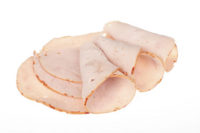Processing Tech
Challenges of meatless, meatlike products

There is a lot of attention being given to the topic of alternative protein — “meatlike” products — which is causing concern among some people involved in the traditional production of meat. There are many new descriptors disseminated through all forms of the media, such as plant-based meat, cultured or lab-grown meat, meatless meat, fake meat, “clean” meat and more.
Plant-based meat analogs are not new. There are a number of meatlike products on the market made from textured wheat proteins and many plant-protein ingredients, such as soy, pea and rice proteins, Konjac flour, etc. These ingredients, and a variety of starches and flours, can extend meat or add fatlike texture to meat or meatless products. There are a number of meatless burgers on the market now, one of which was seen being promoted on a restaurant menu as being “for people who love meat.” And this segment of the market appears to be growing.
Cultured or lab-grown meat is the new concept attracting the most media attention. This is a high-tech process that involves cell development to form the culture from animal cells, then develops cell culture media to provide nutrients for the cells to grow and develops of a support structure as cells differentiate into muscle, connective tissue and fat cells. This product is not commercially available at this time.
The “clean” adjective has been attached to cultured meat, as some people think this product is better for the environment and that the manufacturing process removes the “ick” factor some associate with animal harvesting and meat processing. But the use of the word “clean” is very misleading. And, as consumers learn about the extensive processing that is involved, using many “processing aids,” in making these “lab-grown” products, the “ick” factor returns quickly. Not to mention using the word “clean” with the word “meat” suggests there is something not clean about meat produced from traditional processes. Then there is the question of whether or not the word “meat” should even be in the name of this product.
Under meat inspection, these lab-grown products could not be labeled meat, according to the Labeling Standard of Identity. The problem is, it is not clear whether the U.S. Department of Agriculture (USDA) or Food and Drug Administration (FDA) will regulate the production of the cultured meatlike products, which was the motivation for a new Missouri law. Prior to Missouri’s new meat-labeling law, the United States Cattlemen’s Association filed a petition with the USDA requesting the agency establish a food-labeling requirement that the word “beef” only be used to label meat products that “come from cattle that have been born, raised and harvested in the traditional manner.”
What is also concerning is the safety of the ingredients going into some of these products. One of the “meatlike” burgers now available in restaurants contains a “heme” protein, a genetically engineered protein called soy leghemeglobin. This ingredient is claimed to give a “meatlike” color and flavor to the non-meat burger; however, the safety of this new ingredient for human consumption has not been proven.
Another meatless burger available in supermarkets now is made with mycoprotein, which is a single-cell protein produced through a fermentation process using the fungus Fusarium venenatum. This comes at a time when consumers claim to want natural, minimally processed food products, but the truth is these cultured/lab-grown methods do not meet any of the requirements for natural and minimally processed foods.
Whether these new alternative protein products have much impact on meat and poultry sales will likely depend upon how closely developers can imitate the flavor and texture of real meat. The novelty of these plant protein products is causing many people to try them, but the percentage of return customers remains to be seen. Producing a meatless burger or sausagelike link is much easier than producing a fake steak or roast.
Another production challenge is being able to make the product at a price that competes with real meat. There is always room for dietary diversity with the availability of these products, but it is hard to imagine these alternative proteins will disrupt the livestock and meat industry any time soon. It is important, however, that the livestock and meat industries not rest on their laurels. They must continue to work on improving the quality and safety of real meat products. NP
Looking for a reprint of this article?
From high-res PDFs to custom plaques, order your copy today!










